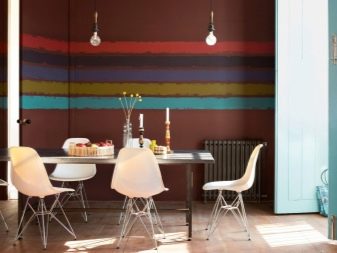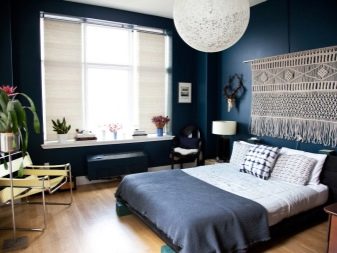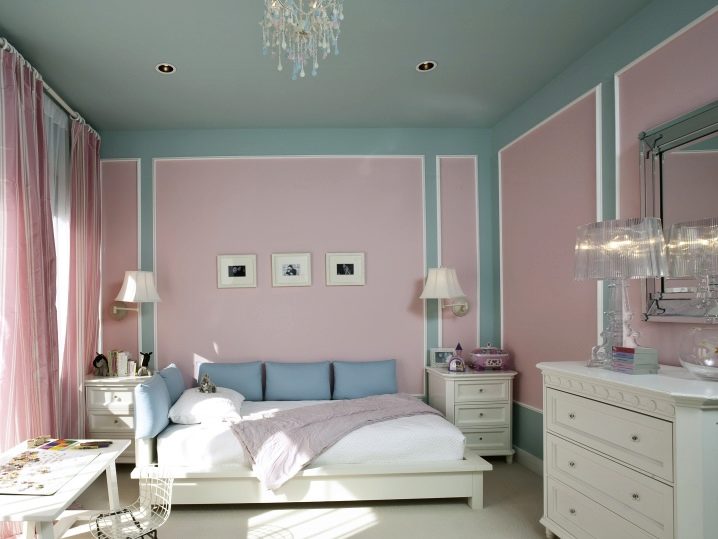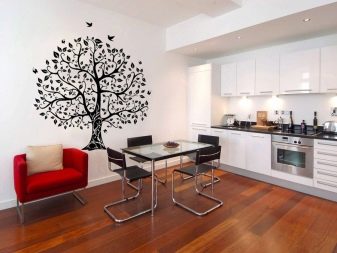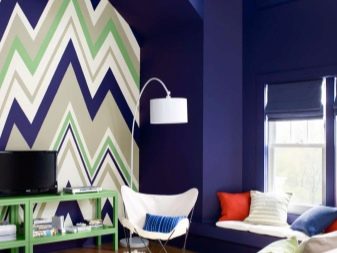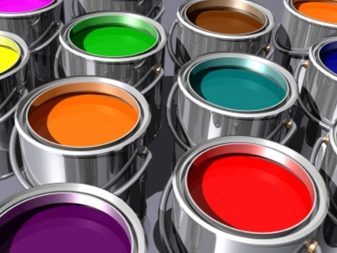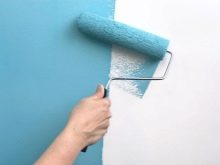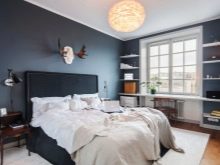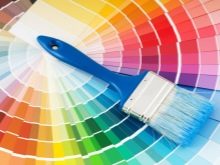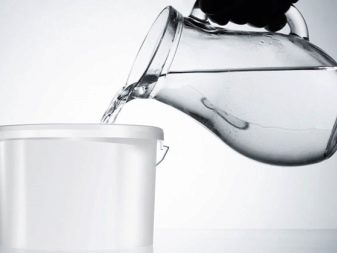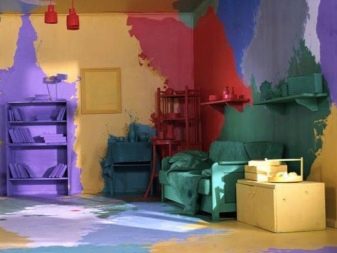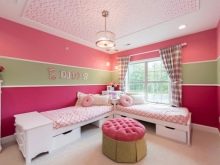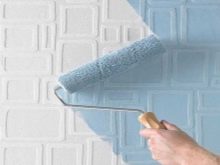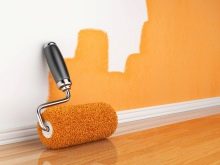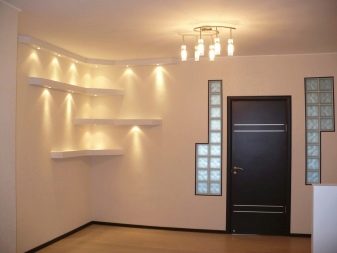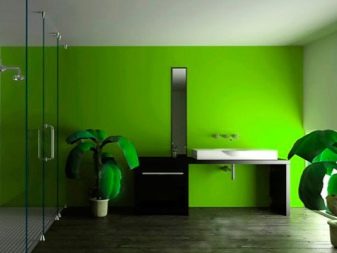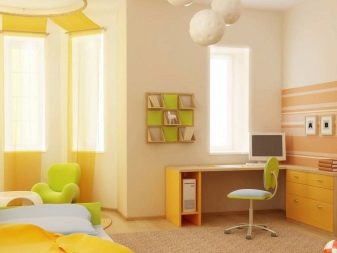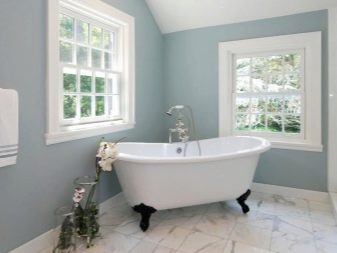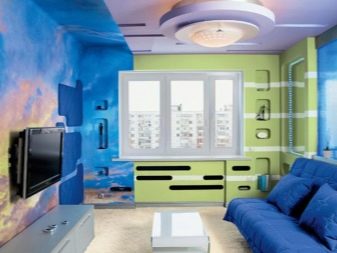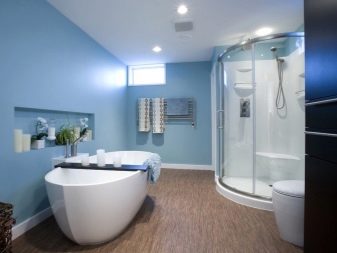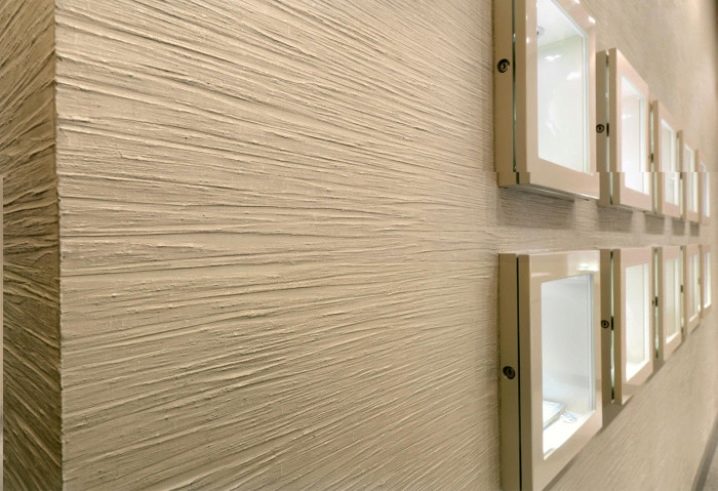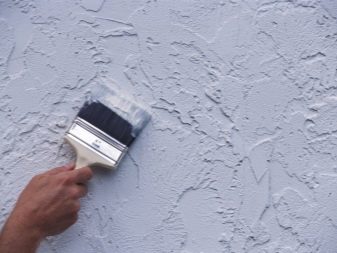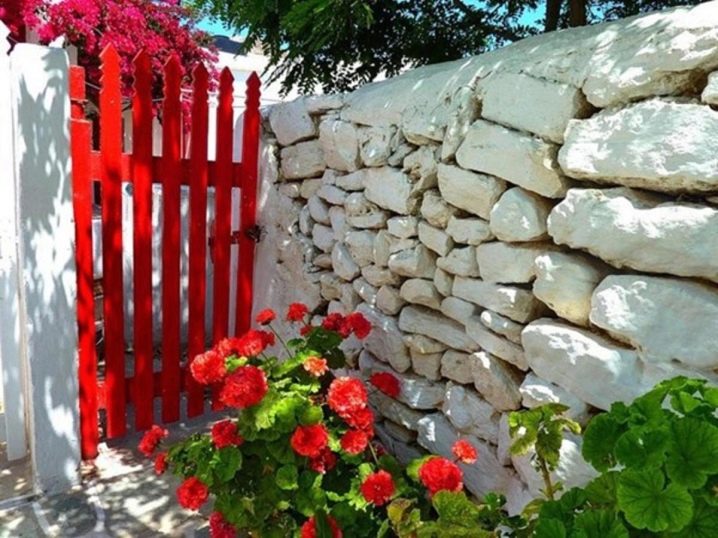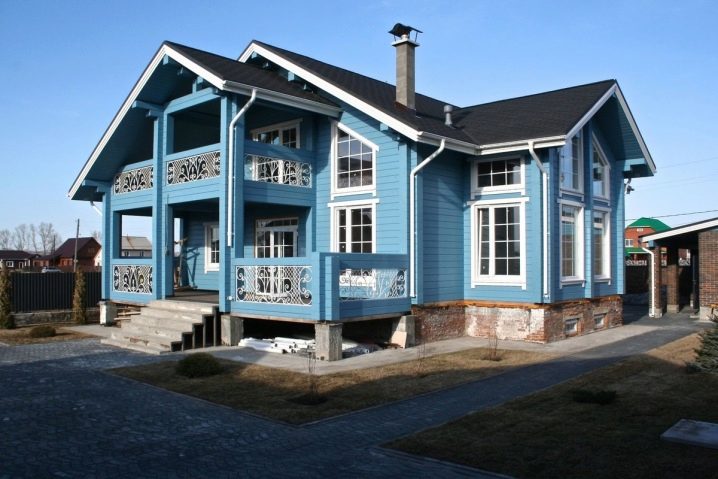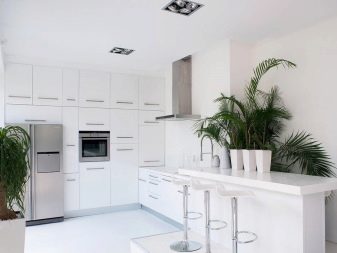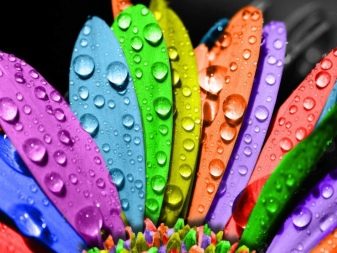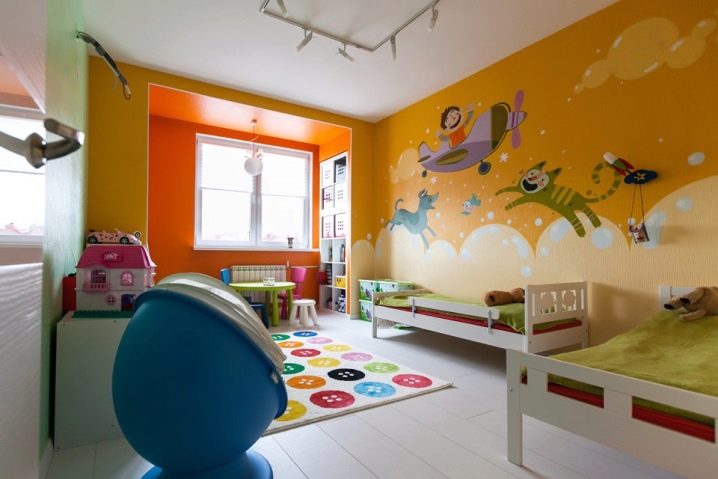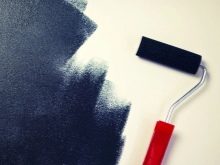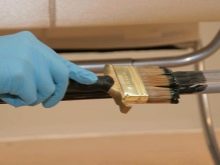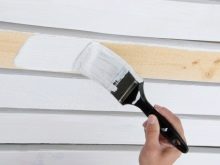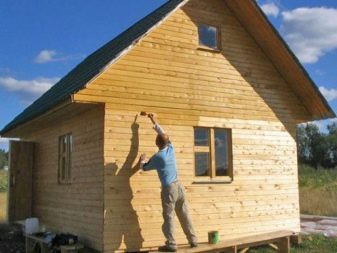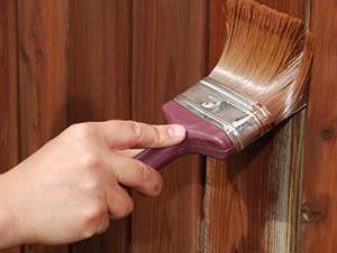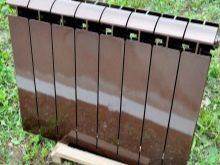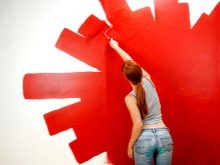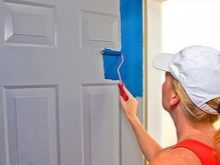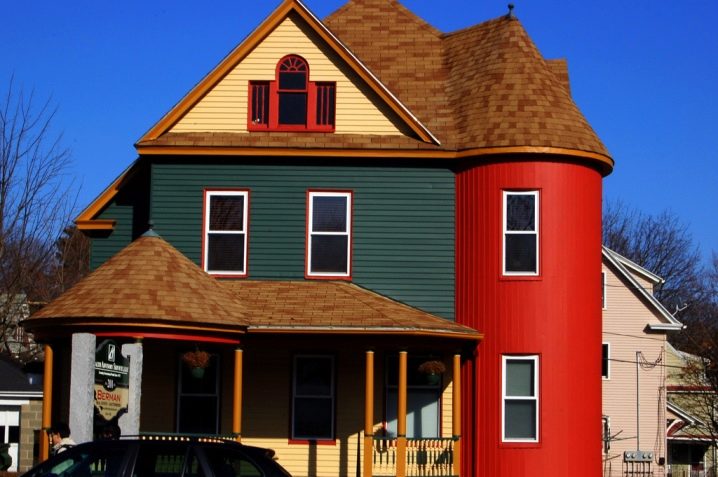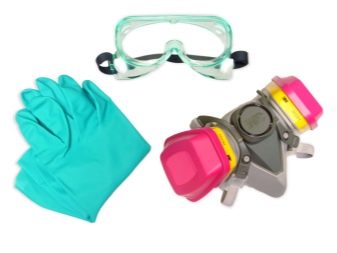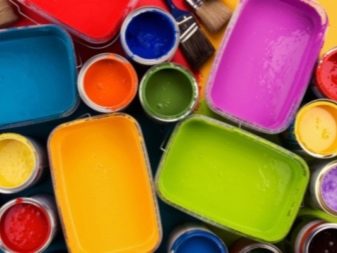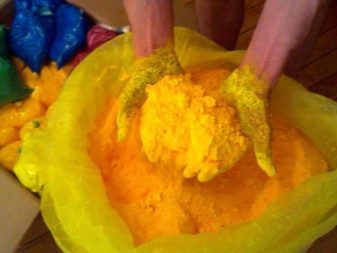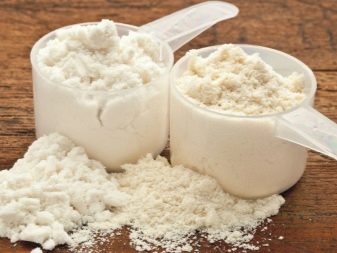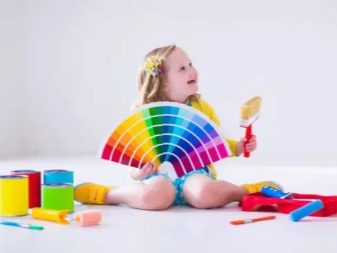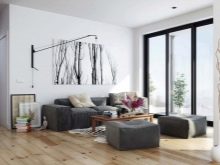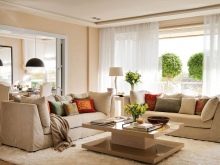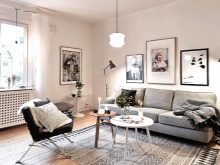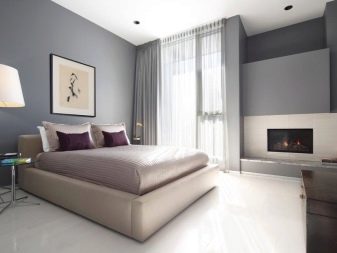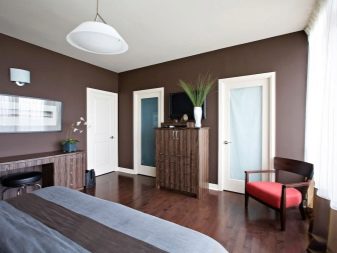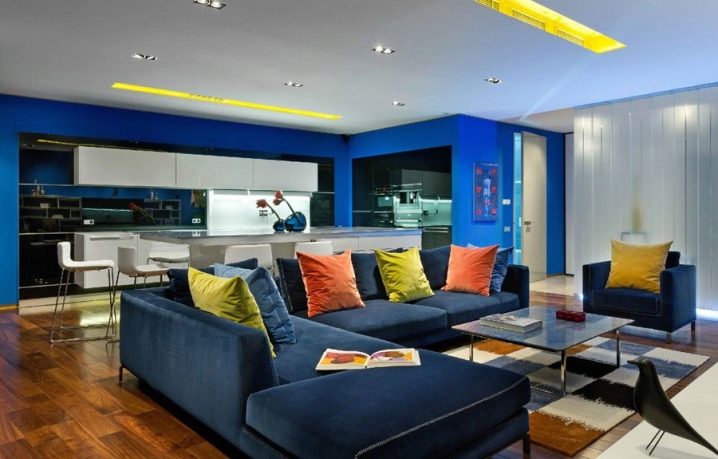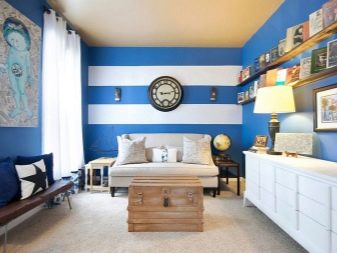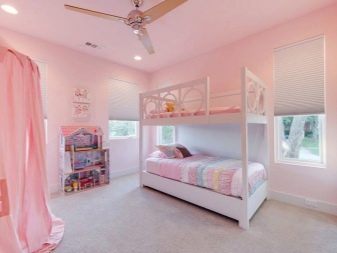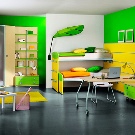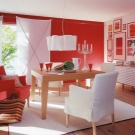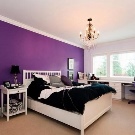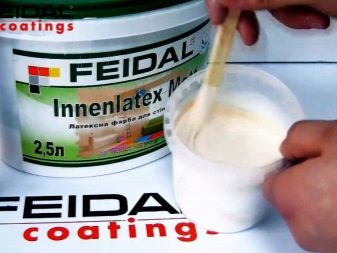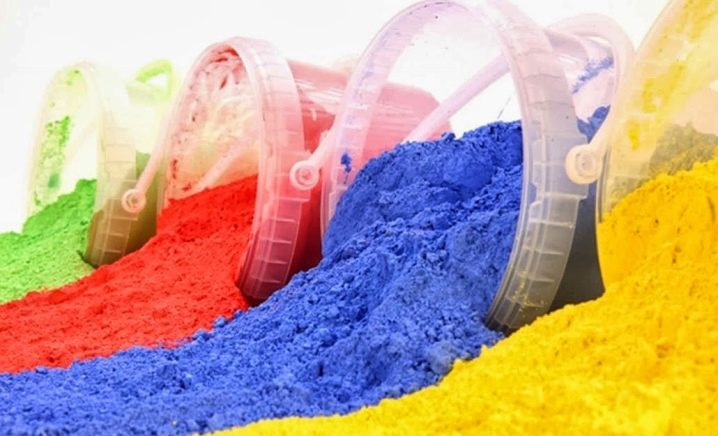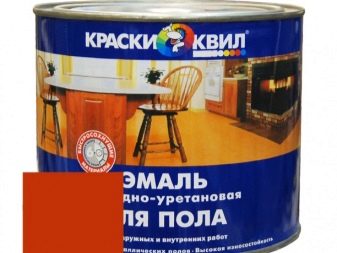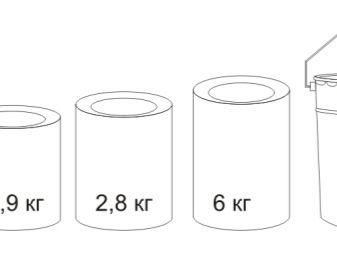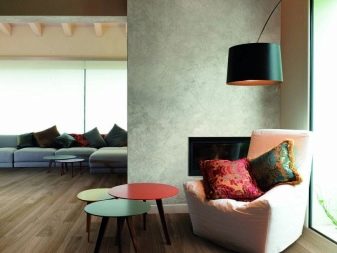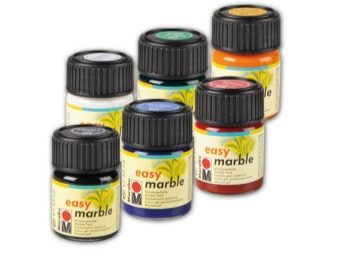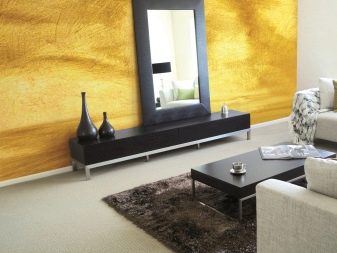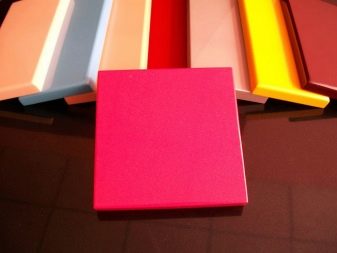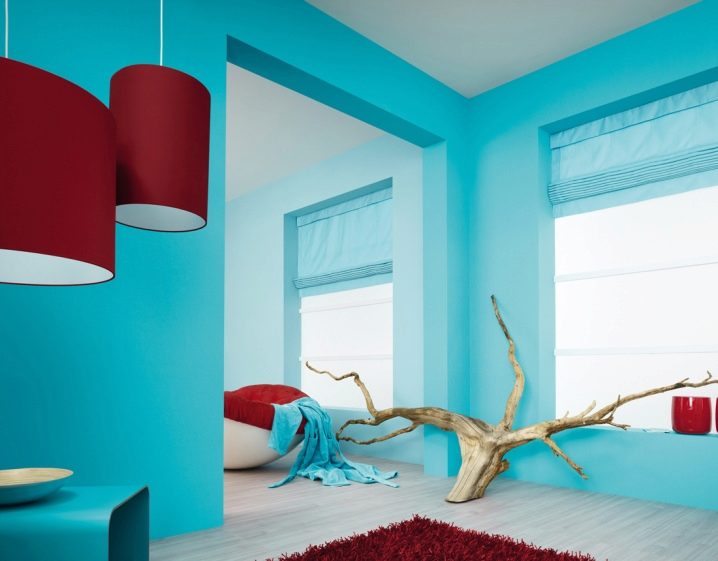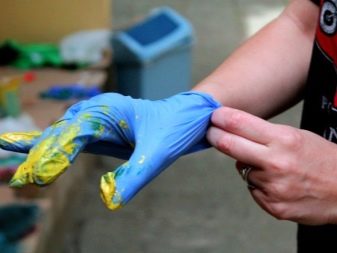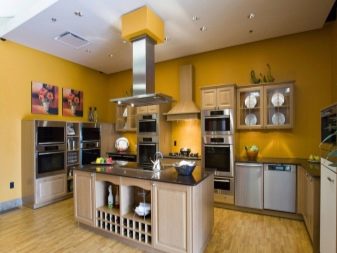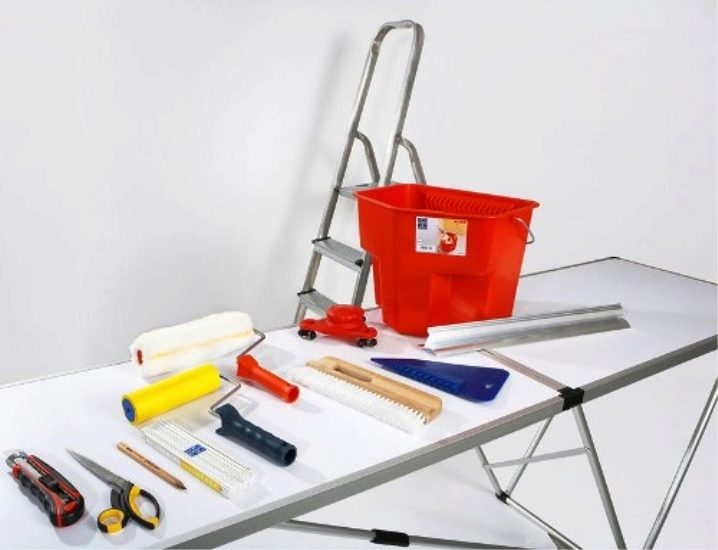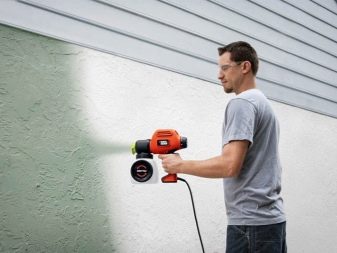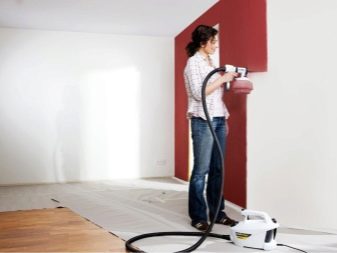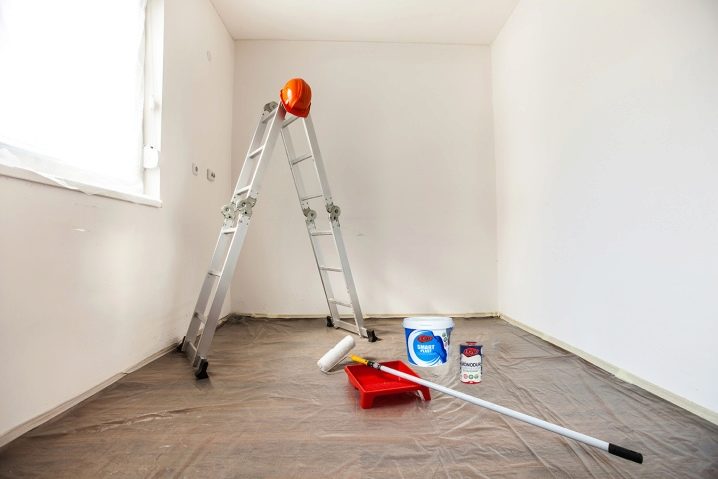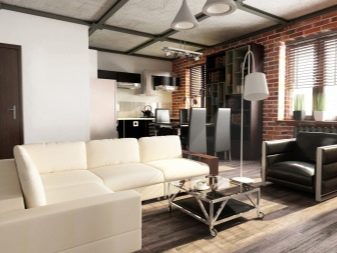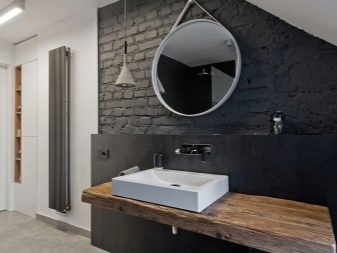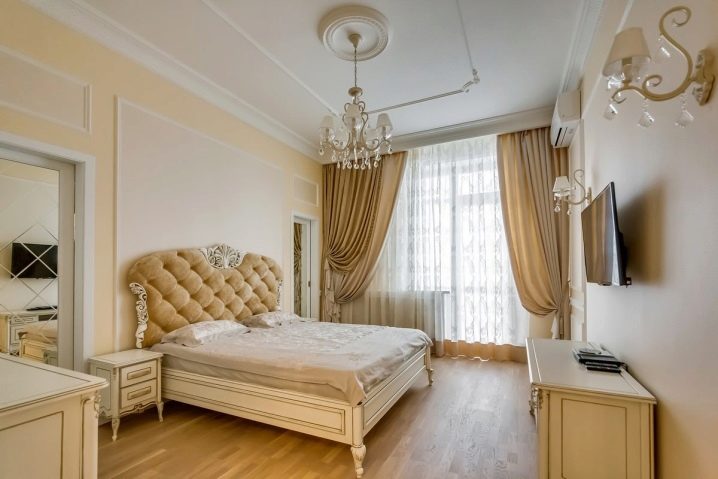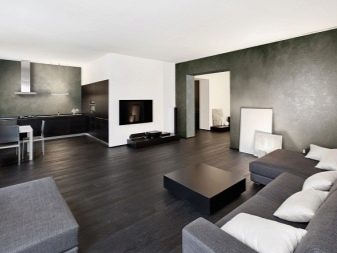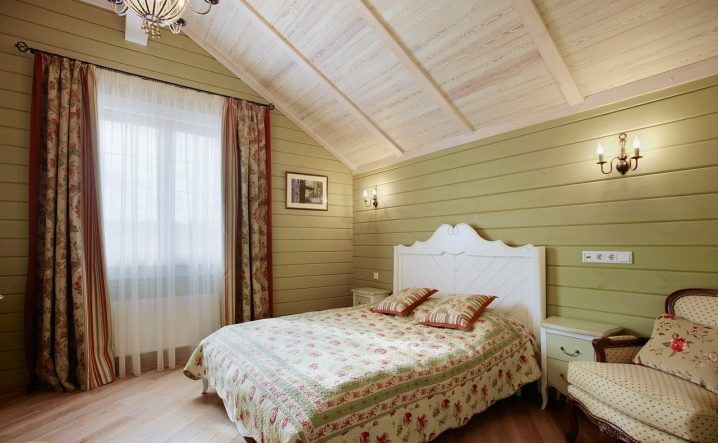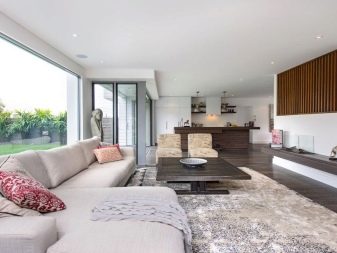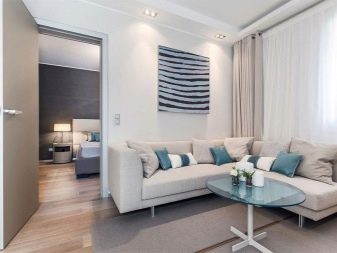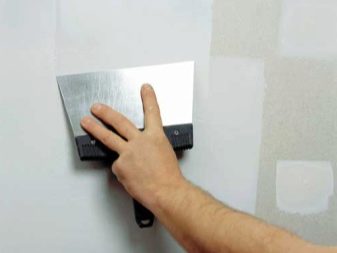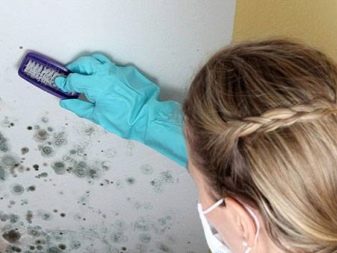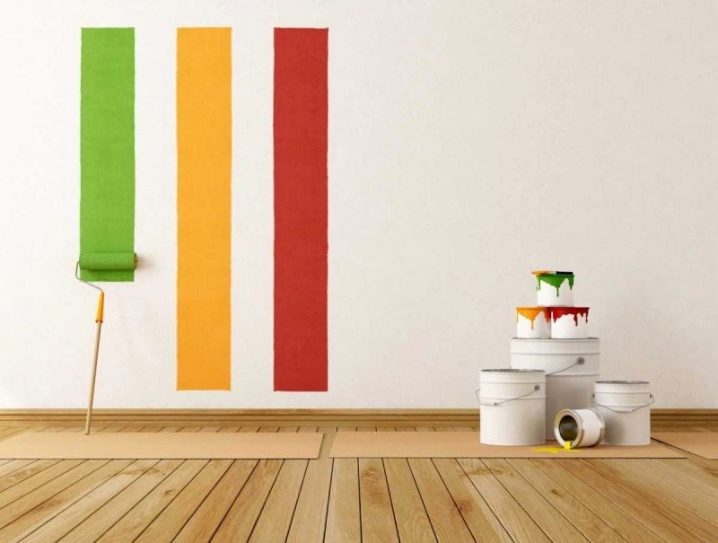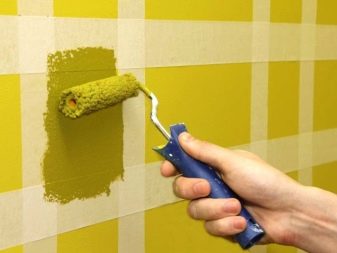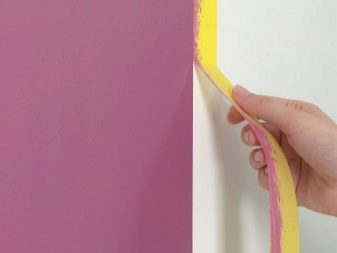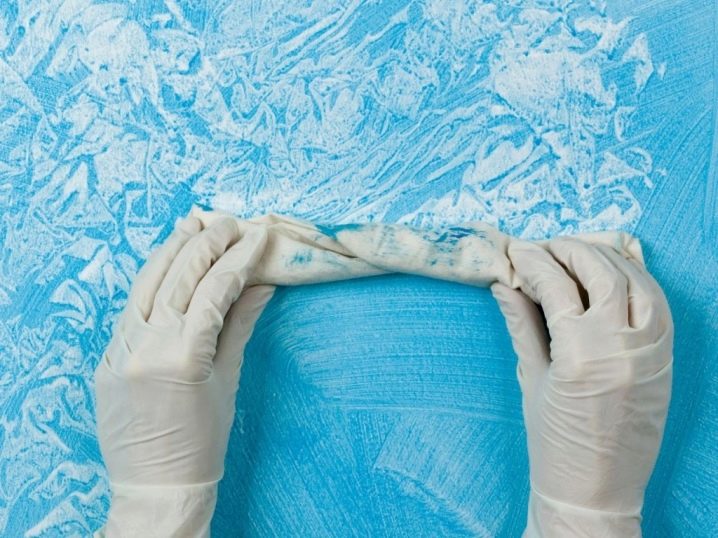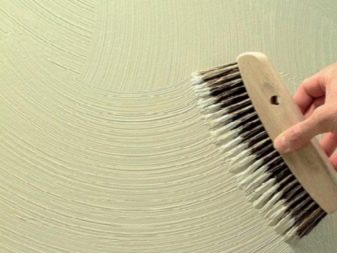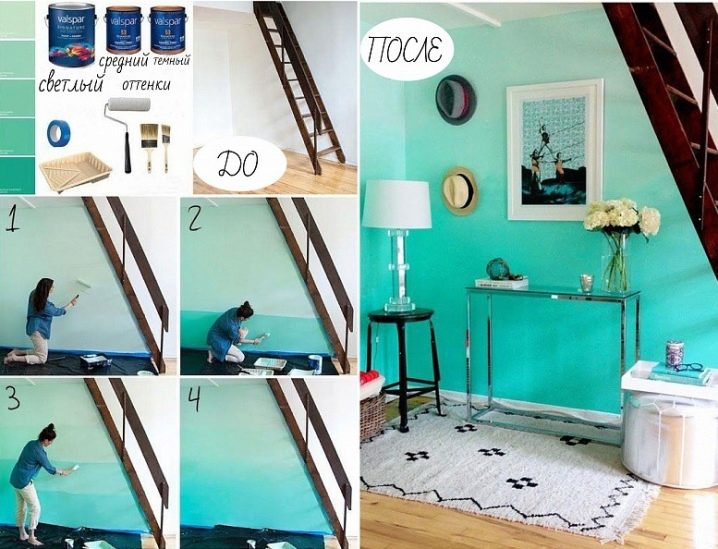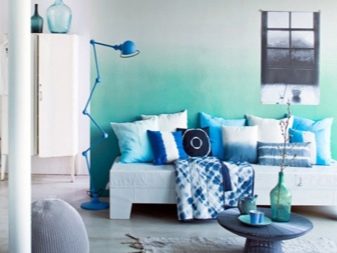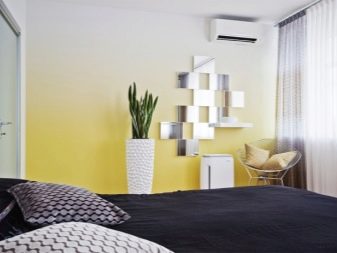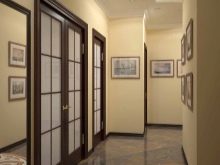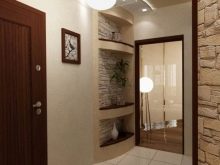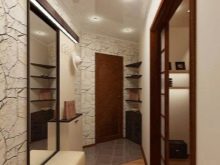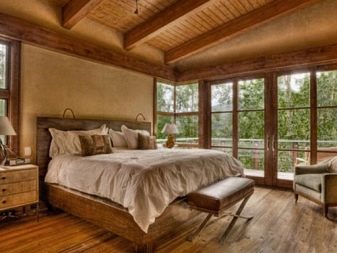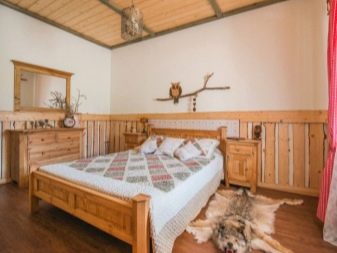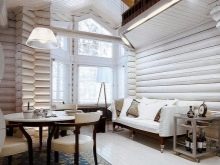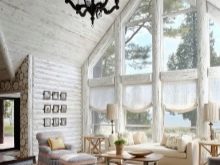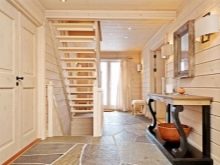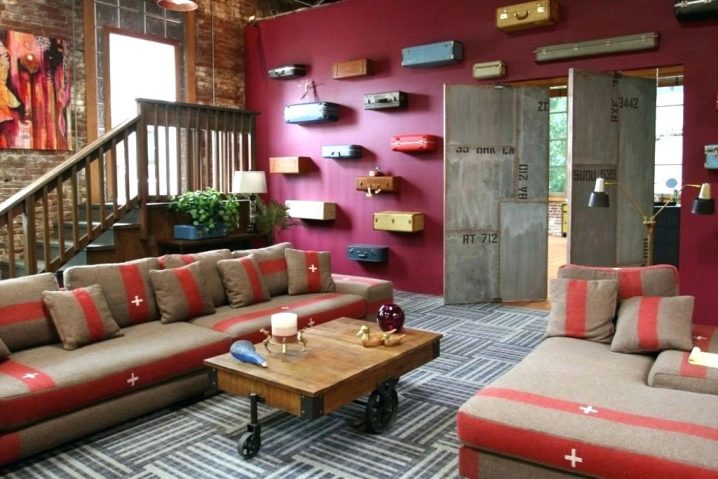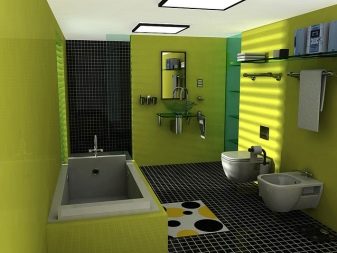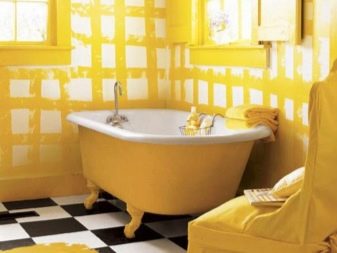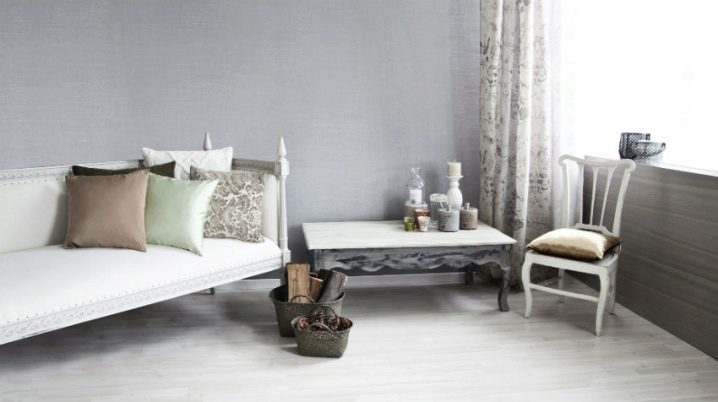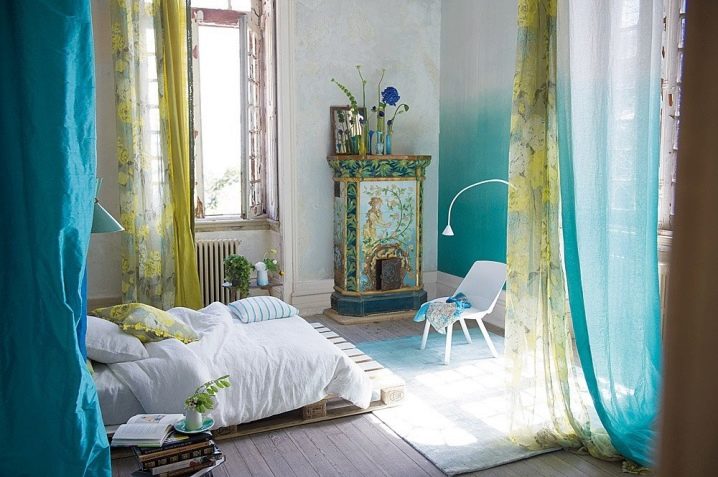Painting walls: from preparation to execution
Every person wants his home to look beautiful and harmonious. Fortunately, to achieve this goal, the owners of private houses and apartments have a wide choice of furniture and decoration materials. Today we will talk about the design of the walls with paint and get acquainted with all the stages of dyeing partitions.
Special features
Painting the walls is an excellent option for home decoration, be it a city apartment of any size or a cozy private house. The main thing is to choose the right color to be in his environment was nice.
Currently, there are a huge number of colors for every taste. This suggests that it is possible to paint walls of high quality in almost any conditions. For example, for small rooms of small footage you should use lighter or pastel colors, which can visually expand the space and refresh it.If you are going to paint the walls in a spacious room, then you can turn to the dark shades that look stylish and attractive.
The important role played by the appointment of a particular area. So, in cozy bedrooms it is recommended to refer to calm and neutral palettes, since they have a beneficial effect on a person’s mood and nervous system. In such conditions, households will fall asleep faster. As for the narrow hallway, here the designers do not recommend using too dense dark colors, as they visually constrain the space. Fans of bright and rich scales should use them in living rooms and nurseries.
In the same room you can combine several different colors of paint. They may differ from each other by a couple of tones or even be contrasted with each other. Choosing the right combination depends on the style of the interior and the preferences of the owners.
Currently, beautiful mixtures are very popular.featuring a glossy shine. Such original colors look especially organic and impressive in the context of modern stylistic trends.If you are looking for a paint that will create an atmosphere of calm and complete harmony with yourself in the room, then you should take a look at simple matte paints. They are ideal for recreation or sleep.
As for the main distinctive feature of all interior paints, it is worth noting their beautiful appearance, which is difficult to confuse with other finishing materials. Of course, much depends on the proper preparation of the base before applying the coloring mixture. If all the work was carried out neatly and correctly, then the result will not disappoint you.
Many people prefer paints, because they can be applied to the hands of various patterns and prints using a special design mixture. Thanks to this technique, it will be possible to create a truly unique interior in the original design.
Today, in stores building materials can meet various types of paints. Each specific composition has its pros and cons, which must be considered when purchasing. For example, some mixtures cannot be used in rooms with high humidity, while others should not be applied to the walls in a room on the sunny side, otherwise they will fade.
Kinds
There are several types of interior paints.Let's get acquainted with their distinctive and operational characteristics.
Water based
Such hypoallergenic paints are found in stores most often and are very popular among consumers. Similar mixes are made on different bases and differ in various qualities.
These colors have a few things in common:
- they are all environmentally friendly and completely safe for the environment and human health;
- any water based paints have almost no smell;
- These finishing options dry quickly and look aesthetically pleasing.
The popularity of these paints is due to several advantages that they have:
- A water-based paint mix easily falls on walls, and it can be almost any surface. To make the base look even and neat, it is enough to apply paint in two layers;
- after this paint is completely dry, a special thin film is formed on the walls that allows water vapor to pass through;
- similar compositions are amenable to tinting;
- water-based paint is relatively inexpensive and is available in a rich assortment.
Of course, water-based color blends also have their weaknesses. For example, they are not highly resistant to mechanical damage. They often appear scratches and other similar defects. In addition, the first colored layer almost does not hide any overlap disadvantages.
If you decide to finish the rooms with water-based paint, then you need to remember that this finishing material does not tolerate a collision with dampness and moisture. For this reason, using it in the bathroom or kitchen is strongly discouraged.
Emulsion
Such coloring compositions are waterborne and diluted with water. Such paint is good because it contains a special binder component, as well as coloring matter distributed in the aquatic environment. Thus, in the composition of this paint emulsion is formed. After complete drying, the similar coloring composition is not washed off from the surface of the walls.
Emulsion paints also enjoy an enviable popularity, because they have a number of positive qualities for which consumers choose them so often:
- It is worth noting the cost-effectiveness of these mixtures and their democratic consumption in the process of dyeing;
- these mixtures are environmentally friendly and absolutely safe, so they can be safely applied even in children's rooms;
- emulsion paints are fireproof and non-flammable;
- these finishing materials easily fall on any surface. However, if we are talking about a metal base, it is recommended to first prime it in order to avoid the formation of corrosion in the future;
- emulsion paints dry quickly and do not have a strong chemical smell.
When choosing an emulsion paint, you should be aware that it cannot be applied to a surface that has previously been finished with a glossy or lacquer ink mixture or a special adhesive material. However, after finishing the emulsion paint the walls can be covered with any composition and use any enamel.
Such varieties of water-based paints are divided into several subspecies:
- Water emulsion
- Acrylic.
- Polyvinyl acetate (PVA).
- Latex, water dispersion and silicone
Water emulsion and water dispersion
Most consumers believe that water-emulsion and water-dispersion mixtures are no different from each other.They do not exfoliate from the walls, are breathable, and are also quite suitable for finishing in rooms with a high level of humidity. However, they do not differ in frost resistance and eventually lose their original color.
However, there are differences between them. So, matte emulsion coatings are washed off over time, and water dispersion coatings are moisture resistant and are not afraid of contact with water. They can also be washed repeatedly, which does not affect their appearance. In addition, water-dispersion mixtures, as a rule, have a simple white color, and water-based paints surprise buyers with a wide color spectrum.
Currently, in stores you can find beautiful water-based paints, which are used to create unique volumetric effects. These mixtures are called texture (or structural). With their help, you can very original and brightly decorate the walls in a particular room. The main advantage of these compounds is increased strength and durability.
Acrylic
As part of these paints, there are special acrylic resins that play the role of a binder.Such mixtures are elastic, so they can even be used to finish the walls of wood. In addition, acrylic paints are durable and quite difficult to damage. With the help of high-quality acrylic composition, hair cracks can easily be closed (up to 0.5 mm).
Unfortunately, these dye mixtures are quite expensive. Of course, in the shops you can find a lot of more affordable options that are based on acrylic polymers. Such mixtures look attractive, but are less practical.
Acrylic versions are resistant to frost, but this effect is achieved only after they are completely dry. In addition, they are characterized by low gas permeability, so they can successfully protect against corrosion of the corresponding material, for example, reinforced concrete. It is possible to boldly apply such paint to the finishing of alkaline bases, however it is allowed to apply it on freshly applied plaster no earlier than after 30 days.
Acrylic paint is durable and wear resistant. It is not subject to mechanical damage, and also retains the brightness of color for many years.In addition, these dye mixtures are not afraid of exposure to sunlight.
Despite the impressive list of positive qualities, acrylic paints have their drawbacks, for example, these finishing materials do not tolerate high humidity. They are not recommended for use in areas with damp walls.
Latex
The most expensive water-based paints are latex variants. Such mixtures are produced using latex, which provides the coating with an increased water-repellent effect. Thanks to this distinctive feature latex coatings can be safely washed without fear of spoiling their appearance.
These paints overlap hair cracks in 1 mm. They can be safely used on various bases. For example, it can be structured wallpaper, walls covered with plaster, drywall or brick, as well as ceilings in the room. As a rule, latex mixtures dry in just 30-60 minutes.
As for the negative aspects of this finishing material, it can be attributed to its poor light resistance. Because of this, over time, latex paint can gradually fade and look less aesthetic.
Polyvinyl acetate (PVA)
Polyvinyl acetate varieties of interior paints are relatively inexpensive, so they are chosen much more often than expensive latex mixtures. But, unfortunately, they do not differ in high water resistance. Because of this, in conditions of regular washing, polyvinyl acetate paint will be washed off the walls.
Such modern dye mixtures are environmentally friendly and resistant to sunlight. In addition, these paints are not afraid of contact with fats and oils, so they can be safely used in many areas of the home. Today, consumers use polyvinyl acetate paint not only for walls, but also for the ceiling.
Silicone
The content of these paints binder component are special emulsified resins. These components are often found in acrylic mixtures. After drying, paints with silicone form a special water-repellent surface, but at the same time they do not cease to pass air and water vapor.
These types of paints are characterized by increased elasticity. With their help, you can hide hairline cracks up to 2 mm in size.Also, it is permissible to apply these paints on the base, covered with plaster, after two days. Such dye mixtures can be used for finishing all types of mineral surfaces.
Silicone paint is allowed to combine with acrylic, latex and mineral mixture. Moreover, they can be applied without fear to the former silicate coating.
The main advantages of these mixtures include:
- increased resistance to pollution;
- resistance to the formation of fungus and mold, as well as the reproduction of various microorganisms;
- resistance to dampness and moisture;
- durability;
- strength.
The disadvantage of silicone paint is its high cost. For this reason, it is most often addressed only to the decor of the room, or if the owners of the dwelling seek to emphasize its luxury and presentableness.
On organic solvent
In these embodiments, the binding component is an alkyd resin, so they are called alkyd resin. They are ideal for finishing plastered floors, as well as floors made of metal or wood. After drying, the alkyd paint does not emit unpleasant odors or toxic compounds,what speaks about its safety and environmental friendliness.
Oily
Oil paint is another type of alkyd blend. Such compositions were popular in the past. They are created on the basis of drying oil, diluted with white spirit, turpentine, or even gasoline.
The main advantage of these compositions is their affordable price, and in stores they are quite common. However, such options dry for a very long time - it often takes several days. After complete drying, the oil paint emits harmful and toxic substances, so it is recommended to use it for exterior decorating. Another significant disadvantage of such a finish is that over time it begins to turn yellow.
Enamel
Such paints are made on the basis of varnish, due to which they acquire a unique glossy surface. Modern enamel mixtures are very often used for painting metal bases, various tools and appliances, wooden surfaces and walls treated with plaster.
It is admissible to apply to enamel structures both for interior, and for exterior finish. Nitro-enamel options dry very quickly - it takes from 15 to 45 minutes.The main feature of these mixtures is their wear resistance and water resistance, moreover, they are not afraid of rust and sunlight.
Silicate
Silicate dye mixtures are based on liquid glass, so they are attributed to a number of mineral compounds. Such paints are the most successful option for building facades.
They have many positive qualities:
- High resistance to temperature fluctuations and harsh climatic conditions.
- Breathability and vapor permeability.
- Resistant to aggressive sunlight.
- Looseness.
- Durability.
- Indelible.
Modern silicate paints need to be diluted with water. They contain a certain amount of alkali, so you should work with them very carefully. Be sure to take care and protect your hands, eyes, try not to get the mixture on the skin.
This paint can not be applied to the base, previously covered with alkyd or acrylic blends. It is also not recommended to paint silicate base of glass, ceramics, metal and stone. But they can safely finish alkaline surfaces, for example, covered with plaster.If before painting you carry out priming of the base, then the primer should also be silicate.
Glue
These paints are made on a water basis and incorporate organic polymers. They are environmentally friendly and there are no harmful compounds in their composition. But glue-based compounds are unstable to moisture and moisture, so their use is limited. It is permissible to use them only in warm and dry rooms. Glue paints are available in both liquid and powdered form.
Casein
At the heart of these types of mixtures are protein components. Such paints can be purchased for both interior and exterior walls. They cover plaster, concrete or bricks well.
Dextrinated
These paints on bone glue can be used exclusively for interior decorating, because they do not tolerate contact with moisture. Such coatings are applied easily and are durable, especially if you turned to them for finishing a dry room. In addition, the range of dextrinized paints is so rich that it will be possible to choose the right color for any interior and style.
These coatings, like all such specimens, are destroyed by dampness and carbon dioxide. In a poorly ventilated area and in conditions of high humidity, the dextrinized paint becomes susceptible to the formation of mold and mildew.
Color solutions
The simplest is the monochrome decoration of the room. The process of applying paint with this design solution is simple and does not take too much time.
As mentioned earlier, for small rooms it is worth choosing light colors, and in spacious conditions both light and dark palettes will look harmonious, as well as their effective combination.
One of the most popular colors used in the decoration of the room are white, beige, cream shades. These colors are "calm" and inconspicuous. Against their background organically looks both light and contrasting furniture. If there are too many light details in the interior, and the floor and the ceiling are also white or beige, then such an ensemble should be diluted with bright accents (decor of saturated colors).
If you decide to turn to light palettes, then you should choose a paint that can be washed. This is due to the marketability of such mixtures.
Dark gamuts look more confident and bold, but they should not be too much. For example, if you finished the walls with dark gray, dark chocolate or black paint, then the furniture for such a room is worth buying light. Fit and details with glossy surfaces.
If you like bright and juicy colors, then you should choose them carefully. Do not forget that too many motley shades can irritate and excite the nervous system. It is not recommended to use similar palettes if you are designing a bedroom or a study. Even in a positive and cheerful children's room too intrusive paints should be avoided.
Against the background of variegated and rich paint, it is necessary to have furniture and decor in soothing colors in order to balance the interior.
The most popular bright colors are:
- Blue. Against its background, objects of white or blue hue will look good.
- Pink. Pink is the perfect solution for a little girl’s room, but it shouldn’t be too much. Arrange the accent wall in such a saturated design, and paint the rest with pale pink paint.
- Green. Natural green color will have a calming effect on the nervous system, if you prefer a calm tone. With acidic green one should be as careful as possible, since it can negatively affect the emotional state of the household.
- Red. This sensual color looks great in combination with white and black. However, such solutions should be addressed only if you are not annoyed by such harsh color tandems.
- Purple, purple. These colors look "sweet" and attractive. They can be used in many rooms and diluted with white details, as well as elements of shiny glass and crystal.
- Yellow. This positive color looks impressive in combination with purple, blue, blue, white and brown details.
Interestingly in the interiors look color combinations. More simple and less intrusive is a tandem of different shades of the same color. If you want to bring more noticeable combinations to the situation, then you should turn to contrasting solutions, for example, to the collision of white and black or yellow and blue colors.
Manufacturers Overview
Today there are a large number of manufacturers producing high-quality and beautiful paint. Let's get acquainted with some of them.
"Paints Faydal"
Paints Faydal LLC is a major representative of the German concern Feidal Coatings. The range of this manufacturer contains paint coatings for both professional and homemade craftsmen. It is possible to choose the ideal option for painting a small room in a living room, and for decorating the whole facade of a large building.
All paints offered by the company Paints Faydal are made exclusively according to German recipes, on high-tech German equipment and using imported raw materials. The brand's products are environmentally friendly, durable and have a large selection of different colors.
Uralintekh
This large enterprise produces a large range of polyurethane, polyester, epoxy-polyester and thermosetting paints in the form of powder. All products are manufactured under the well-known and popular brand Prolak.
Dry paints are created on the most modern equipment. All components of the products are of unsurpassed quality.
The advantages of paints from this manufacturer include:
- Reasonable prices.
- Favorable system of discounts.
- The shortest delivery time paint.
- A wide range, represented by mixtures of various shades.
- Durability and wear resistance of coatings.
"Quil"
This large plant produces high quality lacquer coatings, which are distinguished not only by their attractive appearance, but also by their excellent performance characteristics.
Quil makes spectacular decorative paints for the consumer market, as well as for industrial complexes. Tinting systems for finishing materials are also designed for a variety of conditions, from ordinary residential buildings and apartments to large workshops and enterprises.
Marcopolo
This brand makes stunning paint, having not only perfectly smooth, but also slightly rough surface. Due to the interesting texture, when exposed to sunlight, the coating begins to effectively overflow, demonstrating unique chromatic contrasts.
The range of Marcopolo is represented by decorative interior coatings, which can be selected for absolutely any stylistic directions.It can be unique materials suitable for classic and fancy ensembles or coarse paints that fit well with high-tech or loft style.
Easy art
This company makes a truly exclusive lacquer coatings that have an interesting effect, imitating the shine of the metal. In addition, Easy art also offers classic matte and glossy paint options.
The products of this brand have a long service life, beautiful appearance and pleasant texture. It can be used for application to any surface, be it natural wood, inexpensive plastic, or walls of concrete and brick.
How to pick up?
The selection of paint should be approached very responsibly, since today there are many different options on the market that are not suitable for all conditions.
So, for painting such a popular material as MDF, experts advise using polyurethane primer, special polyurethane paint and special varnish for MDF panels. These materials are designed to finish this base and will not cause him harm. Polyurethane compounds, as a rule, are expensive, but they serve for a long time and look aesthetically pleasing.Also for MDF you can safely use enamels on alkyd, alkyd-urethane and oil base. The latter option is not the best, but it is cheap.
For painting drywall most often choose the popular water-based paint. You can safely add different colors to it and give it the desired color. A wide range of paints are suitable for common concrete walls, as well as reliable epoxy, acrylic-latex and gloss mixtures.
Choose a paint of a particular color in accordance with its future location. So, in the nursery you should use more positive and tender options, as well as in the adult bedroom, where pastel and pacifying tones would look best, but for the living room you can pick up something brighter.
Paint - a great finishing material, which is often bought instead of wallpaper. Experts recommend to buy a mixture that can be washed with water, especially when it comes to bright options.
Refer exclusively to high-quality and environmentally friendly products. Be careful with paints (for example, oil), which contain toxic compounds or alkali.To work with such coatings it is necessary to use various means of protection, for example, high gloves and a mask.
If you plan to paint the kitchen, then be sure to buy a breathable and moisture-resistant paint, otherwise the coating will collapse and quickly lose its appeal in conditions of constant humidity.
For the purchase of high-quality and reliable paint is recommended to contact the large and well-known stores in your city that have a good reputation. So you save yourself from buying low-quality mixture.
Instruments
For self-painting walls should be stocked up with the following necessary tools:
- Spatula (need a wide and narrow tool).
- Roller.
- Brush medium and small size.
- Net capacity.
- Paint tray or special mesh.
- Rags.
- Sandpaper for processing the starting layer.
Also, many users buy for self-painting spray guns or a handy spray gun.
How to paint?
Painting a room in a dwelling is an important process that needs to be given due attention. You need to decide on the style of the interior that you want to see in this space, as well as with a direct tint of paint.Once you stop on specific design solutions and buy all the necessary materials, you can proceed to the decoration of the walls.
Style selection
The choice of a paint depends on the stylistic direction of the interior.
For example, an unusual ensemble in the direction of the loft can be supplemented with gray, dark brown or ash-white paint. These rough surfaces, close to the industrial style, will look great in tandem with accent floors, decorated with brickwork.
For the classical direction, many colors are suitable, but the designers in their designs often choose snow-white, cream, beige and brown tones.
For a modern high-tech style, glossy and matte blends of laconic and simple colors are perfect. For example, it may be white or black coating. Also in such interiors, their combinations look good.
In the country style, wooden surfaces predominate, but they can be easily diluted with accent walls decorated with white, beige, pale green, dull yellow or pale blue paint.
In Provence style settings, you should use soft and pastel colors, for example, peach, pale pink, beige or pale blue.
For a minimalist interior, the best solution is a simple white paint, against which a few interior objects and bright accents will stand out.
Surface preparation
After you have decided on the style of the interior and the color of paint, you should start preparing the walls for the application of finishing material.
- First you need to get rid of dirt and dust on the ceiling.
- If there are irregularities and cracks on the walls, they must be puttied, otherwise the paint will emphasize these defects.
- Be sure to remove the old finishing material, whether it is the old paint or wallpaper. In the case of wallpaper, the old layer of glue must also be removed from the floor surface.
- It is also necessary to remove mold and fungus from the walls, if these defects are taking place.
- It is recommended to re-clean and repair the walls on which the plaster began to lag, and cover up all the cracks and gouges.
Do not neglect the preparation of the base before applying the paint.If the preparatory work is done hastily and carelessly, then the ink mixture may lie poorly and emphasize various defects and problem areas of the walls, if any.
Application techniques
After careful preparation, you can proceed to the direct painting of the walls. It must be produced in different directions (first horizontally, and then vertically). Try to apply the paint so that there are no smudges and drops on the walls. Such problems can be avoided if you take a small roll with a roller. In addition, it is strongly not recommended to apply the mixture in two layers at once, as this will lead to an inaccurate surface and dripping drops.
Do not dilute the paint too much before applying to the wall, otherwise it will go down hard and the result may disappoint you. If you use oil paint, then it is recommended to stock up with a special hair brush.
Divide the wall surface into several separate sections. Even professionals use this technique because it helps to make the base easier, more accurate and faster.On the visual boundaries is to stick masking tape. The first plot, the size of which should not exceed 1 square. m, should be applied paint with three horizontal stripes, and then quickly shade them around the site. For this fit a brush or roller. Approaching the completion of the process, the movement of the brush should occur in the direction from top to bottom.
If you want to create original strips of different colors, then you need to make a markup of the base in advance, and then glue on it strips of paper tape. Removing the special masking tape can be made only after the paint is completely dry.
The given technology is the simplest and most understandable. If you want to make the walls more original and unusual, you can rely on modern design ideas that can transform the finish beyond recognition. Let's get to know them better.
Ornaments
To create a beautiful glaze effect, you first need to cover the wall with a base color, and then with a wrinkled and dry piece of fabric, painted in a different shade, chaotically fill the picture on the surface of the paint. You can also use raw matter.Thanks to such a “tool”, softer improvised ornaments will appear on the walls.
Of course, for this you can use not only paper or cloth, but also other tools. For example, it can be a sponge, which will form a spotted ornament or a brush, which by sprinkling will form unusual patterns.
Textured reliefs
If you want the surface of the walls to be embossed, then you should use glue or glazed paints. It is possible to make them rough and embossed with the help of simple devices that are found in almost every home. To do this, the usual sponge, as well as clothing or shoe brush. However, it is worth remembering that with a glazed or adhesive mixture it is possible to work only after the complete drying of the base paint layer.
Gradients
If you like non-standard solutions, then you should add a creative gradient to the finish.
For this you need to prepare:
- 3 paint buckets of various shades;
- Roller and special dishes for him;
- 2 brushes with hard and soft bristles;
- Paper adhesive tape.
First you need to dip the roller in a lighter paint and apply it on the wall, spreading over the entire area (from the floor to the ceiling). It is necessary to apply the mixture in several layers so that the coating is more dense and reliable.
Visually divide the wall into 4 sections. Apply the darkest paint on a quarter at the bottom. Do not be intimidated by too saturated and contrasting colors and do not strive to form perfectly smooth edges.
Now you need to connect with each other dark and light half of the wall. Mix the two colors in a separate bath, lower the roller into the mixture and draw a strip on the second lower quarter of the wall, slightly going beyond the first quarter.
On the third quarter of the base should be the color of medium brightness. As a rule, it is the most succulent. After all these steps, only one strip remains intact, which is painted in the base color. Gently touch it with a roller and slightly smooth the transition from medium to lighter tone. Of course, you can not do this and leave everything as it is - it will look interesting and creative.
At the end of all the work carefully inspect the wall. If it seems to you that there is an excess of dark or light paint on it, then you should not be upset. At the moment, you still have the opportunity to add another shade to form the perfect color ensemble.
For details on how to create a gradient when painting walls, see the following video.
Beautiful examples
For a small hallway the best option would be light paint. It can be diluted with accent surfaces under stone or masonry. The doors and furniture of chocolate tones will stand out wonderfully against the background of beige or cream color paint.
In the corridor it will be nice to look a tandem of two bright colors. For example, it may be vertical yellow and white stripes of medium width alternating with each other. In such an environment will look harmonious light floor and white ceiling. Provide high-quality and bright lighting in this space, and the corridor will not seem cramped.
Inside the cozy wooden house will look spectacular accent wall, painted in white, caramel, beige or soft shade of coffee. The remaining floors can be left untouched with their natural wood structure. For such interiors, furniture whose upholstery follows the shade of the accent wall and the frames made of wood will be the ideal solution.
Also, wooden walls can be painted in delicate and pastel shades.For example, it may be white, pale blue, peach, caramel and even ashy variants. Interiors with similar details look very cozy and warm.
In the hall you can decorate the walls and more bold colors. For example, it may be a dark red or burgundy coating, against which decorative shelves, suitcases, and gray furniture with coral stripes are placed. Lay on the floor black and gray carpet with a strip and put a small table with wheels, stylized antique. Such an interior will be the perfect solution for lovers of creative and creative solutions!
Moisture resistant paint of yellow color will look good in a bathroom with black floor tiles in a small square and glass shelves. Use chrome-plated parts in this setting, as well as fashionable square-shaped ceiling lights. As a result, you get a stylish ensemble in a modern way.
Against the background of laconic paint of a gray-blue hue, aristocratic interior items will look great: a snow-white sofa with pointed details on the back, a coffee gray-white table on curved legs and a white chair-chair.The decoration of such an ensemble can be made with the help of pastel-colored pillows, vintage buckets with pieces of wood, as well as small bright candles on the table.
To a gentle gradient can be accessed in the design of the bedroom. This can be a smooth transition of the accent wall from green-blue to white to color. Lay a light wood or parquet on the floor and put a bed out of a pallet with light linen. You can complete such an interesting ensemble with curtains of white and blue hue, a painted curbstone in the oriental style and a floor carpet of sky-blue color.

